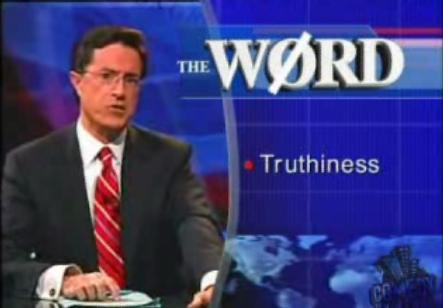 In Part 1, I provided a couple of examples of very poor messaging. The first was from an email that I received that contained lines like:
In Part 1, I provided a couple of examples of very poor messaging. The first was from an email that I received that contained lines like:
“Design a Monetization Strategy to Enhance Strategic Goals While Protecting Core Assets”.
The second was from Cisco’s corporate overview page where they described themselves in such information-free language that it could have been virtually any company.
I then asked the following open questions.
- How did we get into this mess?
- What can we do to try and get out of it?
- Is it even possible to get out of this mess?
There were some good reader comments related to these questions. Here’s question 1.
How did we get into this mess?
1. Laziness
Aaron had a response to this question.
Could it be that, as a company’s product lines and # of target markets increase and diverge, it simply gets too difficult to be more specific, so we fall back on generalities that appeal to almost everybody? Many, many, company web sites have this problem.
Who is the audience for the message, particularly on something like a website? It’s not “everybody”. To me, “falling back on the general” as Aaron states, is a form of laziness. Many companies don’t put effort into understanding who their target audience is, and specifically communicating to them, so they generalize.
The main people any technology company should be thinking about when writing for their website are prospects and customers.
Provide clear, straight forward language that is easy to understand and your prospects will actually give you credit for it. Why? Because you’ve made their life easier.
Prospects are looking for information about you and your products. The easier you make it for them, the more likely they’ll contact you or click on one of your calls to action. And believe me, a clearly messaged website will almost immediately differentiate you from most of your competitors.
The next group that you need to pay attention to is customers. You’ve already sold them something. In theory they are using and like your product or service. Help them when they come back to your site by making it easy for them to find what they need. Maybe they are looking for add-on products. Maybe they need something to help them sell your product internally in their company. Regardless, they are your allies, so make their life easy as well.
For everybody else – analysts, investors. shareholders etc. – they can and will get the information they need through other means of communication.
2. Review Committees
Linda believes one source of the problem are review committees:
I’ve seen lots of companies fall into the committee editing trap. A good writer presents some tight, well-crafted copy, and then everybody swaps in their favorite buzzwords and sound bites. What you get is blather.
Unfortunately this is quite common. Everyone has an opinion on what should be said or what one word implies vs. another or not wanting to leave any “stakeholder” out of the wordsmithing process, and you get mumbo-jumbo. Everyone can write, but only a few people write really well. Unfortunately good writing is not something you can measure explicitly, and is subject to a lot of (poor) interpretation.
3. Truthiness
The issue of “truthiness” also comes to mind as a reason for messaging problems. This is not the Stephen Colbert truthiness — about knowing (or believing to know things in one’s gut) — but truthiness as messaging that has some truth in it, but also contains a lot of implied meaning that is left to the interpretation of the audience.
Often, “wiggle-words” are used so that the company can appear to make claims about the merits of their products, or can hide gaps and deficiencies they know exist.
The word “support” is a common wiggle-word. Many companies claim support for 3rd party products such as operating systems, databases etc. But for those of us who’ve worked on the product-side of the house know that the details matter.
Another wiggle-word is “enables”. What does “enables” actually mean? Two sticks (used properly) enable someone to create fire, but it’s not a great way of doing so.
There are lots of example of ambiguous or meaningless language (e.g. create customer value) that can be placed under the banner of truthiness. But truth be told (pun intended), companies are doing themselves and their customers a disservice by not speaking clearly and concisely.
BTW, I’ll cover questions 2 and 3 (listed at the top of this article) in future posts.
Saeed
Also in this series:
- Taking the “mess” out of Messaging (part 1) – the problem
- Taking the “mess” out of Messaging (part 3) – some solutions
- Taking the “mess” out of Messaging (part 4) – the future